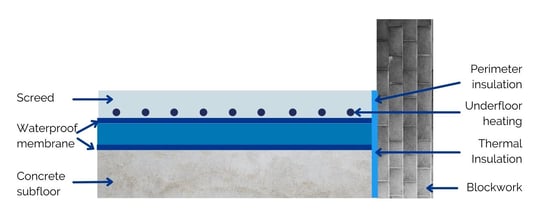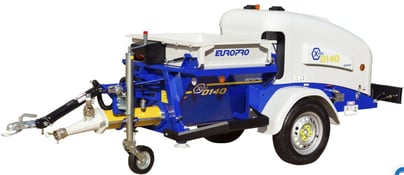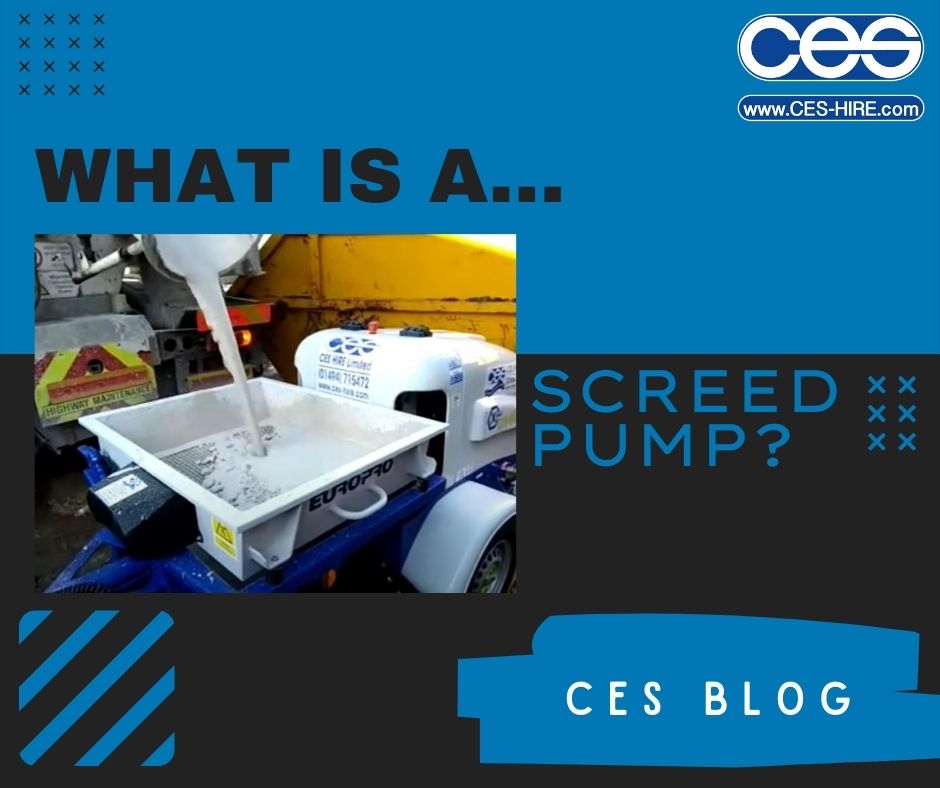A screed pump pumps screed! Okay, we can do better than that! To start with let’s break it down further, so what actually is screed?
We’ve all heard of concrete, screed’s more-popular friend. Whilst screed is less well-known, both materials have similar properties. Traditional screed and concrete are both a mix of aggregates, cement and water. Concrete is a much coarser mix than screed since its primary purpose is strength. Screed has a finer aggregate included since its key objective is to achieve an even, smooth and level surface ready for a flooring finish. Screed is essentially a thin layer of material laid over a concrete subfloor which acts as a base for a decorative finish such as carpet, timber, laminate, ceramic tiles or vinyl. As, a rule floor surfaces should not vary by more than 5mm across a 3metre space. This is where screed steps in since it will level off the structural concrete subfloor. Screed is also a fantastic material to embed underfloor heating in (read more of these benefits and others here). It is important to note that screed is not a wearing surface and should be finished with the desired flooring panels/tiles.
 A Screed Trio
A Screed TrioThere are three types of screeds, bonded, unbonded and floating. Bonded is ideal for heavy loads; it is applied direct to the base using a bonding agent. Unbonded is laid over a damp-proof membrane and is an option that ensures less settlement and shrinkage since it is not bonded to the main structure. Finally floating is frequently used alongside underfloor heating as a layer of insulation. Traditional screed is a blend of sharp sand and cement though coarse aggregate can be added for heavy-duty industrial flooring. However, liquid/pumpable/self-levelling screed is a relatively new material that is becoming increasingly popular. CES stock a number of machines that are compatible with this superb new screed, check out our Euromair X-PRO D140 for further information and videos working with liquid flow screed.
 Now you know more about the material we’re pumping, let’s talk about the pump. Gone are the days of back breaking work mixing by hand and trudging through heavy barrow loads of screed to the desired destination; now a machine will do the work for you. A screed pump will ensure your material is thoroughly mixed to the correct consistency. It is tricky to achieve the same level of uniformity by hand plus of course, it saves time and energy in these manual intensive processes. Using a screed pump also allows greater accessibility, since your hoses will pump the material direct to the correct location rather that you shuttle running screed back and forth. For more about the advantages of using a screed pump click here.
Now you know more about the material we’re pumping, let’s talk about the pump. Gone are the days of back breaking work mixing by hand and trudging through heavy barrow loads of screed to the desired destination; now a machine will do the work for you. A screed pump will ensure your material is thoroughly mixed to the correct consistency. It is tricky to achieve the same level of uniformity by hand plus of course, it saves time and energy in these manual intensive processes. Using a screed pump also allows greater accessibility, since your hoses will pump the material direct to the correct location rather that you shuttle running screed back and forth. For more about the advantages of using a screed pump click here.
At CES we stock a variety of screed pumps from brands such as Euromair and Putzmeister. If you’re searching for a compact electric pump to try out that new liquid screed, why not take a look at the Euromair MixPro 28. Alternatively, the EuromairX-PRO D140 is a heavier-duty diesel machine for those larger scale projects. Our specialist team will be able to help you pin down the right pump for you and your project so why not give us a call. And when you’re ready to pump check out our Tips for achieving great results with floor screed.
